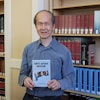University of Michigan Vision Study Says Asians, Whites See World Differently
WASHINGTON
Asians and North Americans really do see the world differently, according to researchers at the University of Michigan.
Shown a photograph, North American students of European background paid more attention to the object in the foreground of a scene, while students from China spent more time studying the background and taking in the whole scene, the researchers say.
The researchers led by Dr. Hannah-Faye Chua and Dr. Richard Nisbett tracked the eye movements of the students — 25 European Americans and 27 native Chinese — to determine where they were looking in a picture and how long they focused on a particular area.
“They literally are seeing the world differently,” said Nisbett, who believes the differences are cultural.
“Asians live in more socially complicated world than we do,” he said in a telephone interview. “They have to pay more attention to others than we do. We are individualists. We can be bulls in a china shop, they can’t afford it.”
The findings are reported in the recent issue of Proceedings of the National Academy of Sciences.
The key thing in Chinese culture is harmony, Nisbett said, while in the West the key is finding ways to get things done, paying less attention to others.
And that, he went on, goes back to the ecology and economy of times thousands of years ago.
In ancient China farmers developed a system of irrigated agriculture, Nisbett said. Rice farmers had to get along with each other to share water and make sure no one cheated.
Western attitudes, on the other hand, developed in ancient Greece where there were more people running individual farms, raising grapes and olives, and operating like individual businessmen.
So differences in perception go back at least 2,000 years, he said.
Aristotle, for example, focused on objects. A rock sank in water because it had the property of gravity, wood floated because it had the property of floating. He would not have mentioned the water. The Chinese, though, considered all actions related to the medium in which they occurred, so they understood tides, they understood magnetism, long before the West did.
In the latest test, the researchers tracked the eye movement of the Chinese and Americans as they looked at pictures.
The Americans looked at the object in the foreground sooner — a leopard in the jungle for example, and they looked at it longer. The Chinese had more eye movement, especially on the background and back and forth between the main object and the background, he said.
Reinforcing the belief that the differences are cultural, he said, when Asians raised in North America were studied, they were intermediate between native Asians and European-Americans, and sometimes closer to Americans in the way they viewed scenes.
Dr. Kyle R. Cave of the University of Massachusetts at Amherst commented: “These results are particularly striking because they show that these cultural differences extend to low level perceptual processes such as how we control our eyes. They suggest that the way that we see and explore the world literally depends on where we come from.”
— Associated Press
© Copyright 2005 by DiverseEducation.com


















